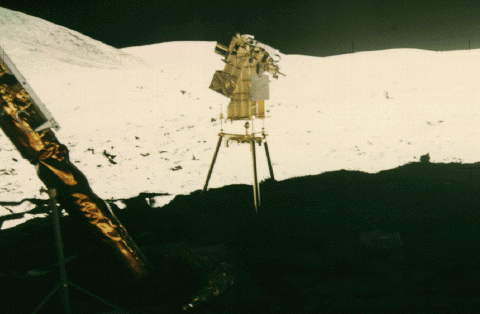Astronomy Picture of the Day
Discover the cosmos!
Each day a different image or photograph of our fascinating universe is
featured, along with a brief explanation written by a professional
astronomer.
June 8, 1996

The First Lunar Observatory
Credit:
NASA,
Apollo 16
Explanation:
The first and only lunar astronomical observatory was deployed by the
Apollo 16
crew in 1972. The
Far
Ultraviolet Camera / Spectrograph used a
3-inch diameter telescope to photograph the
Earth,
various
nebulae,
star clusters, and the
Large Magellanic Cloud.
The camera is seen above placed in the shadow of the
Lunar Module
so it would not overheat. A leg of the Lunar Module enters the picture
from the left. The camera took pictures in
ultraviolet light
which would normally be blocked by the
Earth's atmosphere.
The Far Ultraviolet Camera was created by George Carruthers
(NRL),
had a field of view of 20 degrees, and could detect stars having
visual
magnitude brighter than 11. 178 images were recorded in a film
cartridge which was returned to
Earth. The observatory stands on the
Moon even today.
Tomorrow's picture: Blasting Off From the Moon
| Archive
| Index
| Search
| Glossary
| Education
| About APOD |




Authors & editors:
Robert Nemiroff
(GMU) &
Jerry
Bonnell (USRA).
NASA Technical Rep.:
Sherri
Calvo.
Specific rights apply.
A service of:
LHEA
at
NASA/
GSFC




